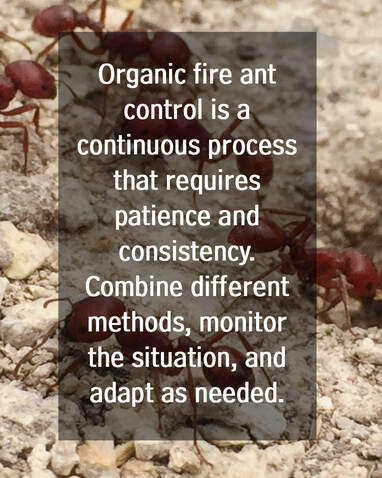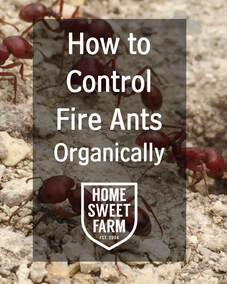 Fall has its unique challenges when it comes to pest control, and now is the time to get your Tool Box prepared for the fall so you can deter pests rather than waiting for an issue to emerge later. Seriously, if you are waiting to have a pest problem, you will be too late. We recommend a basic foliar spray program every 10 to 14 days. In your backpack sprayer combine the following: Fish & Seaweed - 2oz/gal Molasses - 1oz/gal This will be your basic spray program to maintain healthy growth. The following insect controls can be added to the mix to deter pests. Notice: to deter pests. When we get comments that “organic doesn’t work” it’s usually due to the fact that you have waited to treat pests too late. Once you have an infestation, you are late into the game. To have a successful organic program, you need to deter pest problems, encourage beneficials and prevent infestations to begin with. We rotate between these three recipes to avoid pest building tolerance to our remedies. SPRAY MIX #1 Basic spray to deter pests and increase yield, rotate with SPRAY MIX #2 Fish & Seaweed - 2oz/gal Molasses - 1oz/gal Neem Oil – natural fungicide and systemic insecticide Garlic Oil – pest deterrent and emulsifier SPRAY MIX #2 Basic spray to deter pests and increase yield, rotate with SPRAY MIX #1 Fish & Seaweed - 2oz/gal Molasses - 1oz/gal Spinosad – Biological control to deter most insects SPRAY MIX #3 (WORMS/CATERPILLARS) Typically needed in Spring and Fall for brassicas, lettuce and leafy greens, also tomato horn worm. Spray when needed. Fish & Seaweed - 2oz/gal Molasses - 1oz/gal Bt Concentrate – Biological treatment for all caterpillars and worms These all need to be applied with a backpack sprayer. Here are our favorites: Pump Backpack Sprayer Battery Powered Backpack Sprayer We encourage you to stock up your Pest Control Tool Box now as we are heading into the fall growing season. Don’t let annoying insect damage ruin the quality of your fall garden. FOR MORE INFORMATION AND COACHING, JOIN US ON PATREON
1 Comment
 Beneficial Nematodes: Nature's Tiny Warriors Beneficial nematodes are microscopic worms that prey on fire ant larvae, reducing their population naturally. These nematodes are safe for plants, humans, and other beneficial insects, making them an ideal choice for organic fire ant control. Best applied when the soil is moist and should be watered in. Best purchased online, they will be fresh and need to be refrigerated until you are ready to apply. Diatomaceous Earth: A Natural Desiccant Diatomaceous earth, made from fossilized algae, is an organic powder that dehydrates fire ants upon contact. When sprinkled directly on and around ant mounds, it can help to repel and deters these pests without harming other organisms. This eco-friendly solution is a valuable addition to your organic fire ant control toolkit. Citrus Peels: Repel Fire Ants Naturally Fire ants dislike citrus, so scatter orange or lemon peels near their mounds. The strong scent acts as a natural repellent, encouraging them to relocate. This simple and cost-effective method not only keeps fire ants at bay but also adds a refreshing aroma to your garden. Organic Insecticides: Targeted Fire Ant Control Look for organic insecticides containing ingredients like neem oil or pyrethrin. These compounds specifically target fire ants while minimizing harm to beneficial insects and the environment. They provide a targeted and effective solution for managing fire ant populations and best applied as a mound drench. Ant Bait with Spinosad: A Powerful Organic Option Our favorite method is using ant bait containing Spinosad, derived from naturally occurring soil bacteria. This organic substance attracts worker ants, who carry the bait back to their colony, ultimately eliminating the entire population. Best applied when it is dry out. You can treat mounds individually or scatter it where you see ants actively foraging. Citrus Oil Drench Concentrated orange oil mixed into a soil drench can effectively treat mounds. Pour it deep into the mound and around the mound which will kill ants on contact. Be careful that it may burn grass or foliage so do small area to test or you may need to dilute your mix. 2 to 4 TBS per gallon is a good place to start. Maintaining a healthy and thriving garden doesn't have to involve harsh chemicals. By utilizing organic fire ant control methods, such as beneficial nematodes, diatomaceous earth, citrus peels, organic insecticides, ant bait with Spinosad, and citrus oil drench, you can effectively manage fire ant populations while preserving the well-being of your garden and the environment. Remember, organic fire ant control is a continuous process that requires patience and consistency. Combine different methods, monitor the situation and adapt as needed. |
AuthorBrad and Jenny have been professional growers for over 30 years. They raised their family homesteading in Texas and are considered "pioneers in the local food movement". They started from scratch and created the first and largest Community Supported Agriculture (CSA) farm serving Houston, TX. MORE ABOUT US >> Archives
September 2023
Categories |

